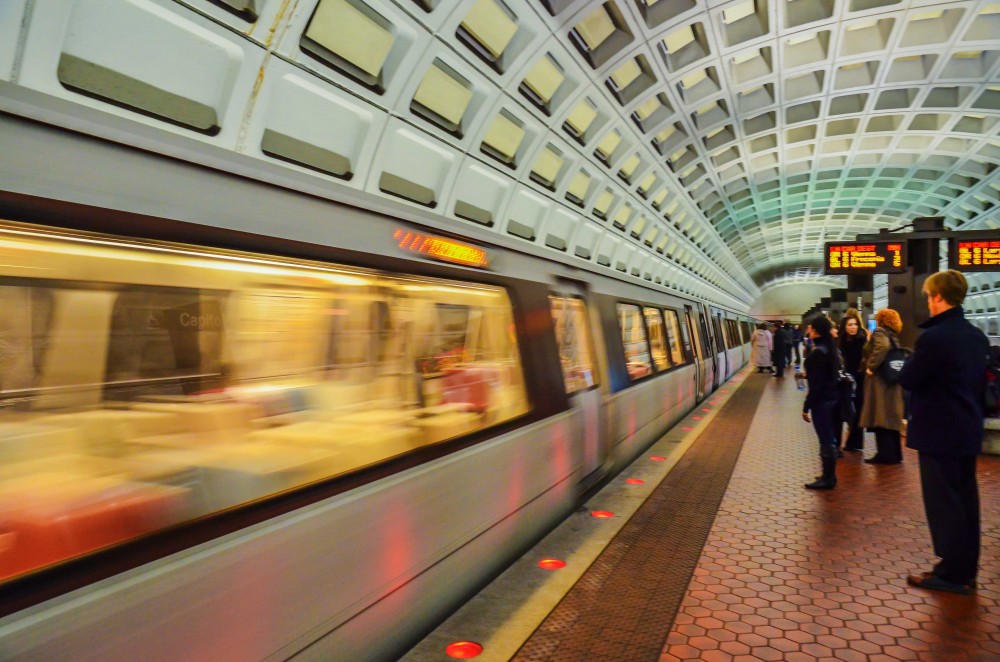
A plan to protect subways in the event of a chemical or biological attack is ready to be put into place and implemented, scientists say.
Mark Tucker, engineer at Sandia National Laboratories, is leading a project to study how to decontaminate chemical and biological weapons attacks, such as anthrax, on systems facilities, and said the release of an overall process to decontaminate subways in the event of such an attack is virtually ready to implement.
The 300-page report and software tool will be made available to municipal subway systems and emergency planners, once it has been reviewed and approved by the appropriate federal agencies. The instruction manual will outline all of the decontamination methods, as well as each method’s strengths and weaknesses.
The report also will be released as a software tool, Tucker said, which will guide the user through a flowchart highlighting decision points. Local, state and federal responders can select a decision such as “decontaminate subway cars” and see what information they need in order to make an informed choice. The report and the software will be made available free by the Department of Homeland Security.
“What we’re trying to do is make it so that if somebody does release anthrax into a subway system, we can get the system back into operation as soon as possible while still protecting public health and safety,” Tucker said in an interview with Homeland Preparedness News.
Having this kind of planning on hand, he said, is crucial to being prepared for such an emergency.
“I think this preparation is similar to being prepared for a hurricane. You have a plan and you have the resources in place, just like you would for a hurricane,” he said. “We’ve prepared the plan and we’re helping them prepare for an attack, should it happen.”
Conducted over four years, the Underground Transport Restoration project is a collaboration between Sandia; the Environmental Protection Agency; the Centers for Disease Control and Prevention; Argonne, Pacific Northwest, Brookhaven and Lawrence Livermore national laboratories; and MIT Lincoln Laboratory, as well as local and state officials. The project examined everything from how to clean subway tunnels to how to clean a subway car.
Critical to the process was overcoming grime and time, Bob Knowlton, one of the lead members of the technical staff at Sandia, said.
With years of accumulated grime in the subway system, one of the challenges, he said, was coming up with ways to test to determine what a contaminate was and how far throughout the subway it had spread. By swabbing areas and sending them to labs to be analyzed, it is possible to determine what kinds of biological elements may be at play.
But the system takes time. Knowlton and his team suggested combining several samples in one culture. If no Bacillus anthracis grows in the sample, then all of those areas swabbed are clean.
Research in decontaminating a subway car, each of which carries a price tag of up to $6 million, helped to develop a plan to bring a car to a tented area and use an extra-strong dose of the industrial gaseous pesticide methyl bromide.
“The cars need to be tented so that we can control time, temperature and humidity,” Knowlton said. “The process was taking close to a day to complete…. There are certain precautions that need to be taken, including using an active carbon ventilation system to capture the methyl bromide.”
In order to overcome this time element, the plan will recommend implementing economies of scale, where some subways would be retrofitted in order to accommodate multiple cars to speed up the process.
Various processes – from using bleach and common swimming pool chemicals, to using a decontamination foam created by Sandia – were tested on a large scale in a mock subway at Fort A.P. Hill in Virginia. The military training facility includes a mock subway station platform and about 600 feet of tracks, Knowlton said.
A previous test, that released harmless particles similar to Bacillus anthracis were released into the New York subway system during operational hours, and then thousands of samples were collected to track the bacillus’ spread. Using that data, the group was able to test the processes, take notes and make recommendations.
Sandia’s decontamination foam has been engineered so that the foam sticks to the walls and ceilings of the subway tunnels longer, allowing the decontaminants to kill more of the bacteria.
“Once the water evaporates, you’re left with a fine powder you can just brush off,” Tucker said of the foam developed by Sandia chemical engineer Patrick Burton. “It’s a way of overcoming the grime and the temperature problems without creating a mess.”
The foam was originally developed with funding provided by the Department of Energy and National Nuclear Security Administration Chemical and Biological National Security Program. It has been licensed to MODEC, Inc. and EnviroFoam Technologies, Inc., which have developed it for use in a variety of applications, such as commercial and residential mold remediation, disinfection of hospitals and schools and pesticide removal for farm equipment.
Also developed was a spray knockdown system that would take anthrax particles out of the air. Using a fine mist of charged liquid droplets, dilute decon foam or even plain water, the spray attracts the anthrax particles and pulls the spores out of the air, preventing people from breathing the anthrax bacteria in, and possibly helping to stop its spread.
These and other technologies – including smartphone apps to make sample record keeping more reliable and straightforward in the field, and connecting laboratory results with sample locations to give a geospatial tool for identifying hot spots, as well as augmented and virtual reality systems – are all included in the Department of Homeland Securities report and software tool.
While the foam already is available for purchase by municipalities through eight different vendors, a timeline on the release of the spray knockdown system, the report and software tool was not immediately available.




